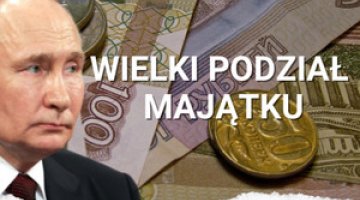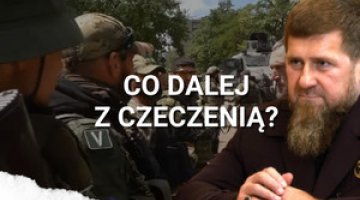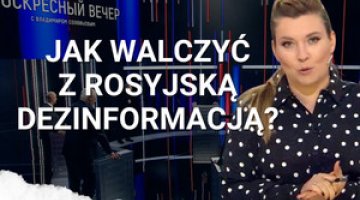The Russian army – the priority for Putin’s third term
Military exercises – as training and as propaganda
The readiness test for the Russian Federation’s Armed Forces units in the Far East is the largest ever previously unscheduled training exercise. The forces and resources of the Central and Eastern Military Districts were involved (5 land armies and one air-force army), the Pacific Fleet, and the strategic and transport aviation units located in the central military district (totalling 160,000 soldiers, 5000 fighting vehicles, 130 aircraft and helicopters, and 70 warships and auxiliary units). The manoeuvres were held on 17 test ranges in both of the above-mentioned military districts, as well as in the Sea of Japan and the Sea of Okhotsk. To participate in the exercises, the units were moved by train and air over distances of 1000 to 3000 miles.
In Russian media coverage – which was also addressed to foreign audiences – the readiness test marked the culmination of this year’s training process for the Russian army (especially in the light of the information, issued towards the end of the manoeuvres, that the Russian-Belarusian ‘West’ exercise planned for this September will involve ‘only’ 12,000 soldiers). A series of unannounced exercises covering the entire territory of the Russian Federation is ongoing (including in recent days the strategic rocket divisions and mountain infantry brigades); preparations for the large exercises in the European part of Russia (which are traditionally announced a year in advance) are also underway. The Armed Forces’ most intensive training activity is expected in the second half of August and in September. It remains an open question as to what extent and which of these projects the government will decide to publicise – and by extension, to use as a weapon of diplomacy in its relations with its neighbours.
Military spending – the top item in the Russian budget
Since July 10 information concerning the new budget assumptions for the years 2014-2016 has been released, although it has been somewhat overshadowed by the above-mentioned military exercises. Despite the general trend towards cutting costs associated with the observed slowdown in economic growth, and the offset of a small part of the previously allocated funds to purchase new weapons and military equipment for the period after 2016 (amounting to US$3 billion over three years), Russia’s military expenditure will continue to grow at the rate planned in previous years. The defence chapter of the federal budget (from which about 90% of the funds available to the Ministry of Defence come) are estimated to be US$78.7 billion in 2014, US$96.4 billion in 2015 and US$105.2 billion in 2016 respectively (converted into US dollars at current prices; for 2013, based on the accepted conversion rate for the US dollar, the figure is US$64-70 billion). For comparison, the expenses for the other so-called ‘agencies of force’ (in the ‘maintenance of order and security’ chapter), which had been growing at a similar rate, have risen by just 9% over the same period. Besides investment in military expenditures, only funding to prepare for the Winter Olympics in Sochi in 2014 and the football World Cup in 2018 is expected to rise, as well as that for the modernisation of the railway infrastructure – which, it should be noted, is extensively used by the military. Expenses for other purposes are to be held down at no higher than the current levels.
According to the long-term finance minister Aleksei Kudrin (who resigned in opposition to the further increases in military spending), defence is currently the only budget item which has increased not only within the budget (the share of military spending in the budget is expected to rise from 15.7% this year to 22% in 2016), but also as a percentage of GDP (currently around 3% of GDP; at current rates it should reach about 4% in 2016). It should be noted that for at least a decade, increases in military spending had been proportional to the growth of GDP (the expenditure allocated to defence had been hovering around 3% of GDP).
Increase in public support for militarisation
It is worth noting that the build-up of military power has considerable public support. According to the Levada Centre poll, 46% of respondents supported an increase in military spending, even if it affected the economic slowdown (41% of those surveyed were opposed; in previous polls in 1998, 35% of respondents favoured a build-up, as against 53% who did not). Russian society is also becoming more vulnerable to propaganda of a growing military threat to Russia. The number of respondents perceiving an external threat as a more serious challenge than internal problems has risen to 23% (from 13% in 1998). 32% of respondents also believed that it is more important for Russia to be a military than an economic power (compared to 22% in 1998). It is assumed that these trends will become more pronounced, and they will only be reversed if there is a significant decline in the standard of living in Russia.
Conclusions
The unannounced tests of the Russian army’s combat readiness – which were specifically organised with the participation of President Putin – are the most visible sign of the priority which military matters are being given. The clear demonstrations of military efficiency should first and foremost be considered as justification for the ever-increasing spending on modernising the Russian Federation’s Armed Forces. We can thus assume that the military reform (i.e. the whole issue related to the modernisation of the Armed Forces and the defence system) will be implemented in its present form in the foreseeable future, despite the clear slowdown in economic growth.
The military exercises, which have been presented as a source of pride for the average Russian, are also a part of shaping public opinion. The attitude of the Russian public, for whom the army remains one of the most important elements of statehood and Russian tradition (the Armed Forces are one of the few elements of the state structure which enjoy prestige and public confidence), favours the ongoing militarisation of Russia. It is assumed that this trend will be maintained and exploited, irrespective of which political forces hold power in Russia.





